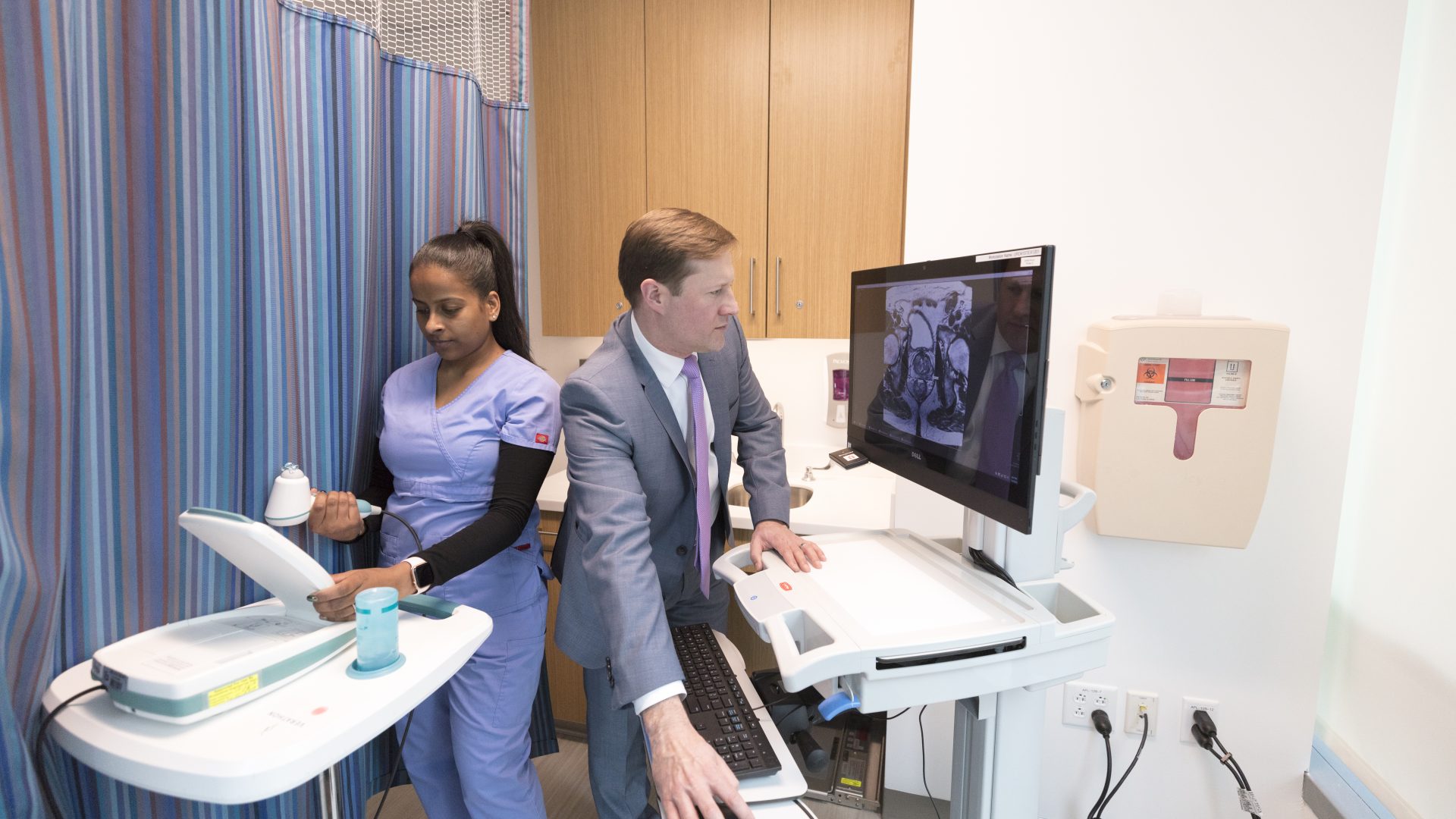A novel three-dimensional (3D) planning technique could optimize treatment planning for partial gland cryoablation, according to a recent pilot study.
The new technique could overcome the shortcomings of two-dimensional (2D) imaging for preablation treatment planning. With respect to prostate cancer cryoablation, there are no commercially available software tools to guide treatment in 3D.
Urologic oncologist James S. Wysock, MD, and his research team developed the patient-specific 3D models using multi-parametric MRI (mpMRI), as well as virtual 3D cryotherapy probes to simulate the procedure.
“Prior to cryoablation, we use virtual 3D planning to confirm the required number and placement of cryoprobes to achieve confluent treatment volume for each unique lesion and margin, more accurately estimating treatment volume, and thus, predicting a larger number of cryoprobes,” says Wysock.
Targeting A Key Challenge
Partial gland ablation for prostate cancer limits side effects by focusing treatment to only regions of known cancer and preserving the surrounding healthy tissue. Increasingly, mpMRI has been utilized for detection, localization, and staging of prostate cancer.
While organ-sparing treatment strategies have been widely employed for other malignancies, such as kidney and breast cancer, Wysock says this approach for prostate cancer has been limited by challenges in precise determination of tumor location and volume within the prostate gland.
“Achieving a confluent ‘kill zone’ for MRI-guided prostate gland ablation has remained a significant challenge.”
Precise Location Prediction
In their pilot study, Wysock and his team used the 3D prostate cancer models, mpMRI, and 3D visualization software to plan and simulate a theoretic zone of cryoablation.
Twenty men were included in a 3D planning cohort and outcomes were compared to 20 others undergoing partial gland cryoablation using traditional 2D planning techniques.
“Our 3D models conceptualize the location of the tumor within the prostate, as well as provide guidance on the extent of the necessary treatment margin.”
James S. Wysock, MD
After analysis, the researchers demonstrated that the virtual cryotherapy probes predicted the exact “kill zone” preoperatively, providing novel guidance for the operating procedure. In addition, at the time of follow-up biopsy, more men in the 3D planning group were negative for prostate cancer as compared to those in the 2D planning group.
“Our 3D models conceptualize the location of the tumor within the prostate, as well as provide guidance on the extent of the necessary treatment margin to predict an adequate ‘kill’ zone,” Wysock says.
Looking Ahead
Future studies with more patients will investigate how this method compares to traditional 2D planning, as well as how it impacts long-term treatment efficacy.
Wysock says that while the findings are an important first step, meaningful differences between 3D and traditional 2D planning could not be validated in this pilot study due to the small cohort and retrospective nature.
“In the future, 3D planning may allow for a more comprehensive assessment of the coverage area needed for successful tumor ablation. Our results encourage further study in a larger cohort.”
Read more from our experts in Urology






